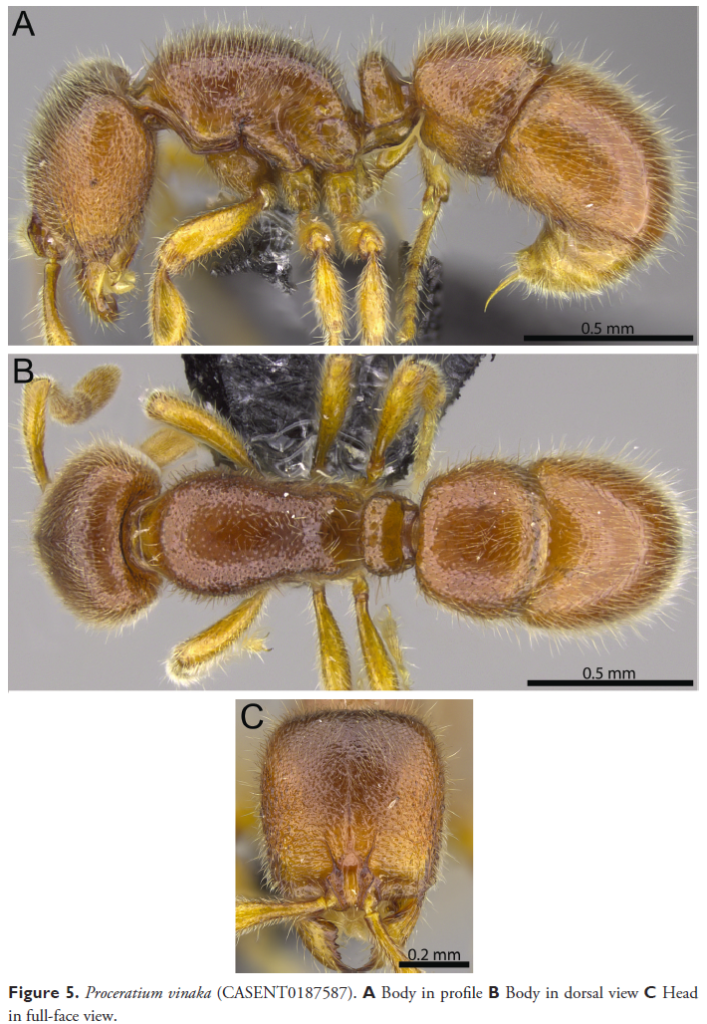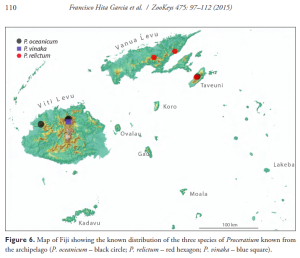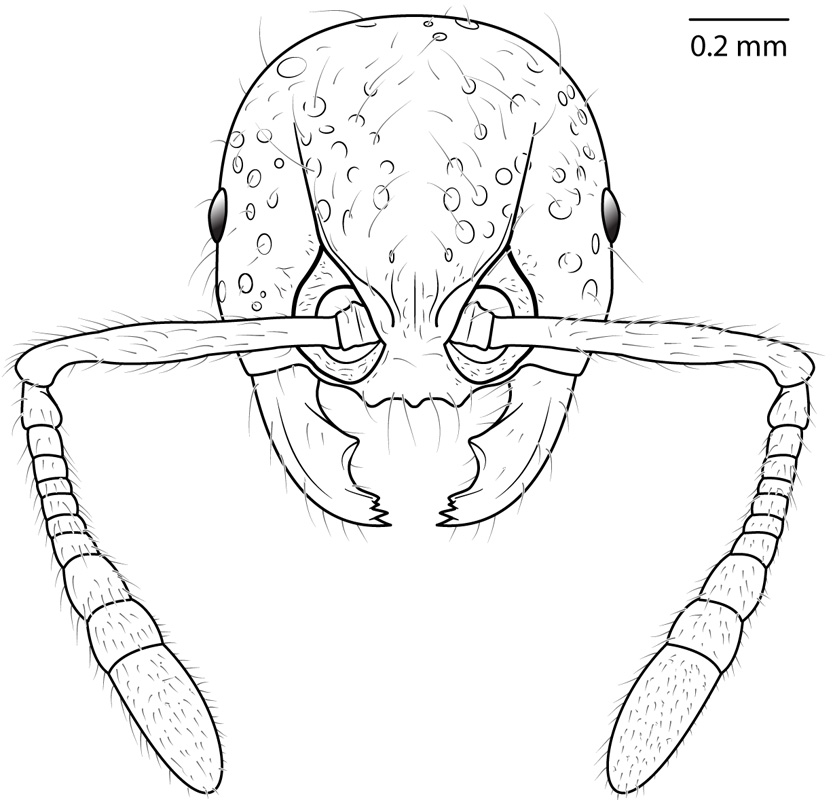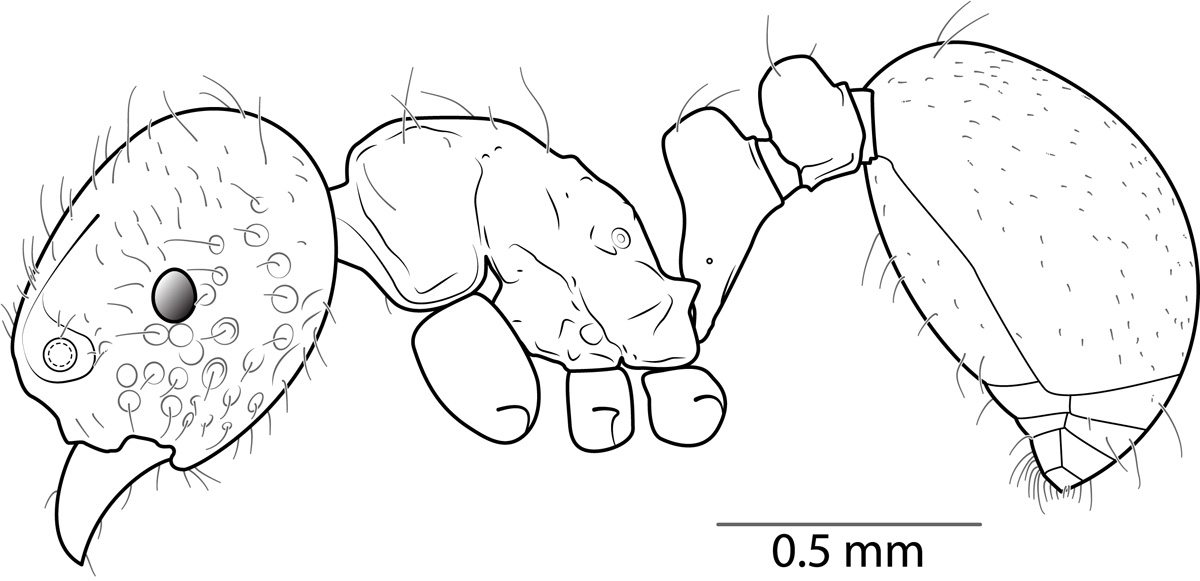Francisco Hita Garcia, known more familiarly as Paco, took the lead on describing a newly discovered species of Proceratium from Fiji [1]. Vinaka is the Fijian word for thank you. My friend Moala Tokota’a told me it is the most important word in the whole language.
To call this blind, inconspicuous species rare is rather understated. In fact, there is only one single individual worker of this species ever collected in the whole wide world. I remember the moment I first laid eyes on it. A group of us including Rosie Gillespie, some of the crew from WCS and my wife Julia were working our way down from the misty peak of Mt. Devo (Vanua Levu) after a long day. There is a single track unsealed road we were following that winded down the mountain. The upper elevations of Mt. Devo are as pristine a forest as one will find in Fiji, but there was an old garden site on the way down that was transitioning back to jungle.
I was scanning the ground on hand and knee, searching for a last score before heading back to the truck, when this slow-moving stout and armored ant caught my eye. It looked out of place foraging on the surface. The line from Notorious B.I.G. shoot first ask questions last compelled me to get this special creature secured in a vial before it went to ground in the leaf litter. I stuck around for a few more minutes hoping to find more of its kin, but to no avail.
That was ten years ago. Since then this single specimen has been mounted on an insect pin together with various labels detailing the location, date and circumstances of its capture. It has been resting quietly in an insect cabinet, the sole known representative of its species, awaiting a name. Thanks to the effort of Paco and Evan, Proceratium vinaka is the 12th new ant species we’ve described from Fiji over the past decade. Only 34 more to go!
[1] Hita Garcia F, EM Sarnat, EP Economo (2015) Revision of the ant genus Proceratium Roger (Hymenoptera, Proceratiinae) in Fiji. ZooKeys 475: 97-112. doi:10.3897/zookeys.475.8761 [pdf]




